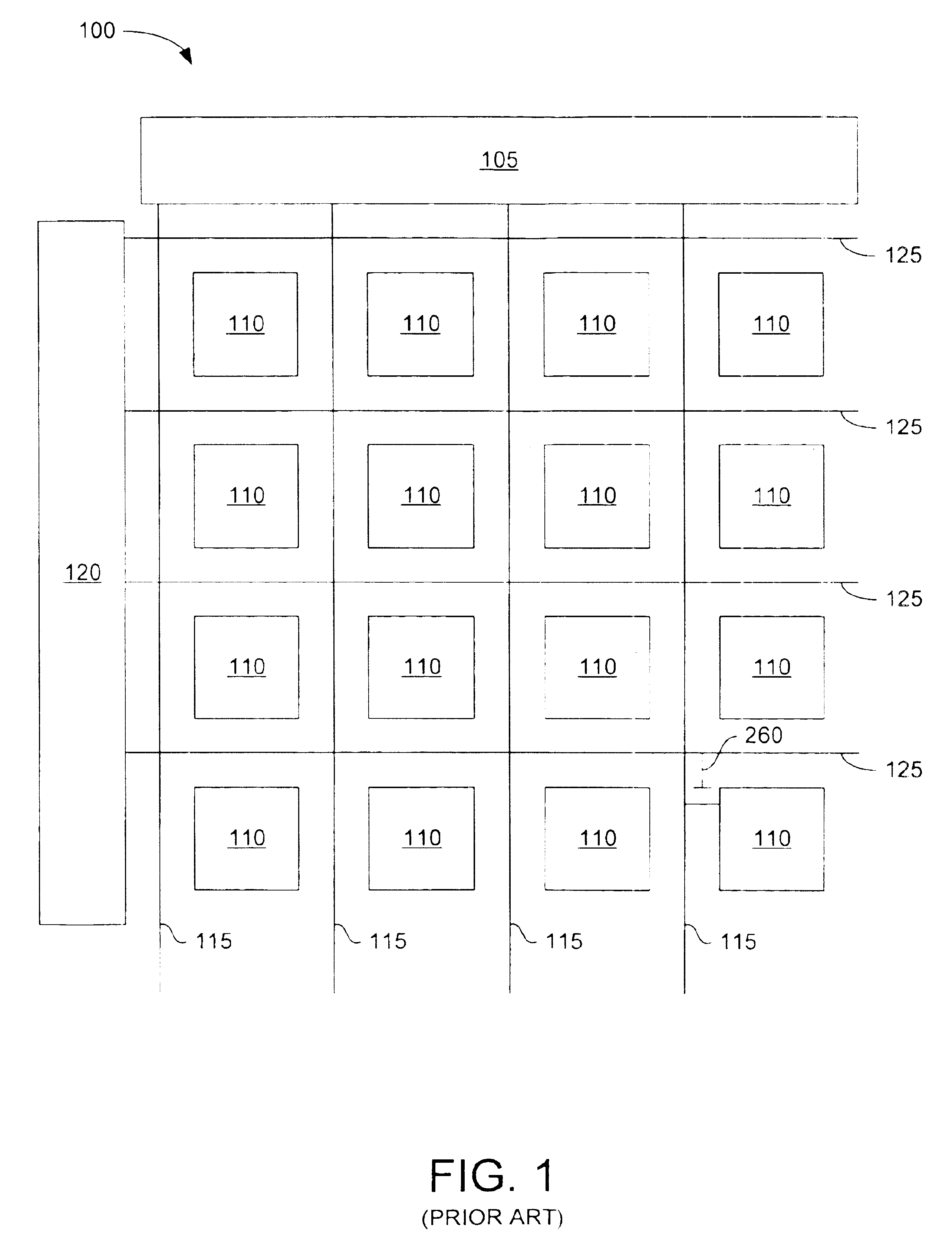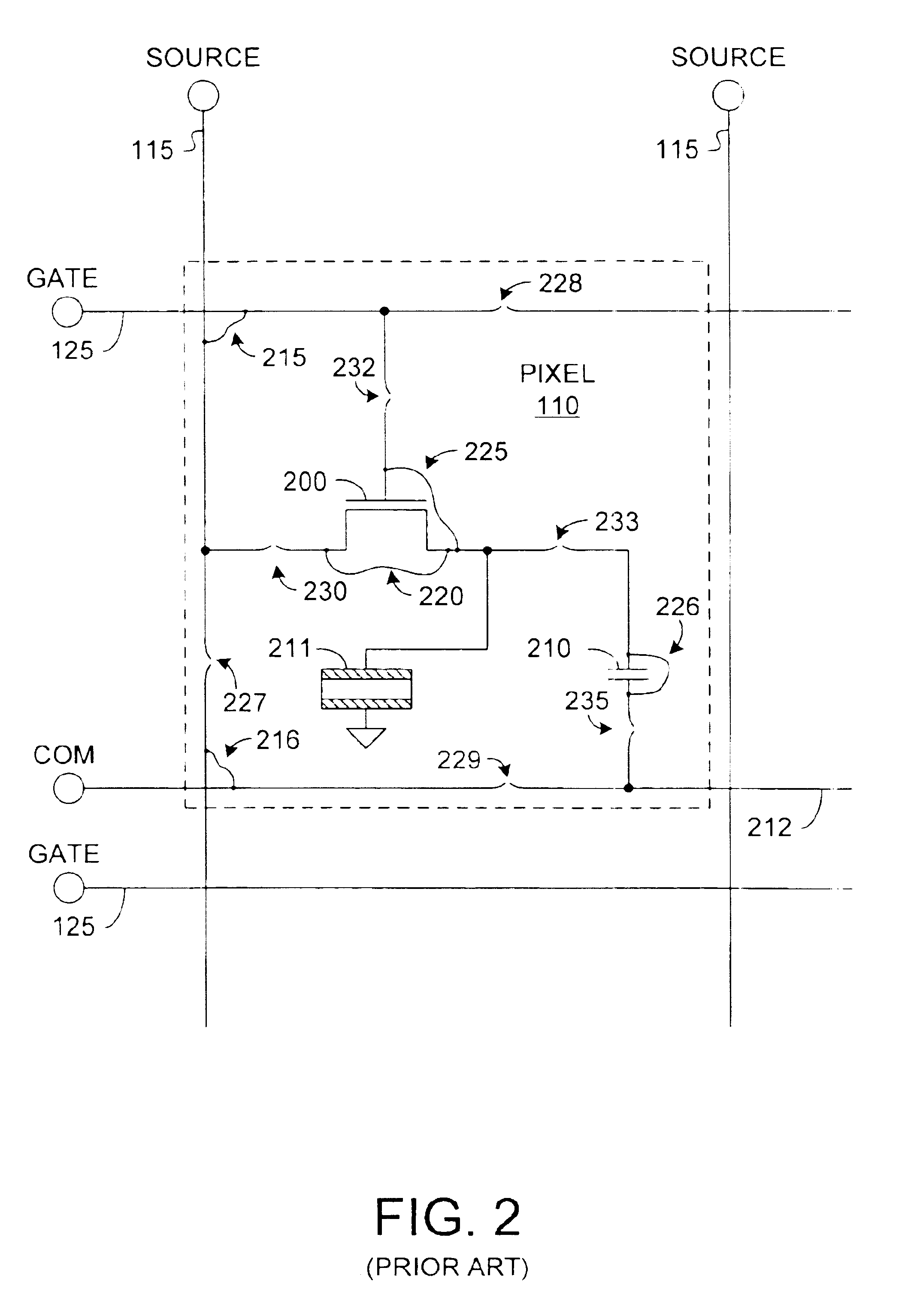Methods and systems employing infrared thermography for defect detection and analysis
a technology of infrared thermography and defect detection, applied in the direction of individual semiconductor device testing, optical radiation measurement, instruments, etc., can solve the problems of defect artifacts, difficult to discover and inability to detect defects using conventional test methods
- Summary
- Abstract
- Description
- Claims
- Application Information
AI Technical Summary
Problems solved by technology
Method used
Image
Examples
Embodiment Construction
FIG. 3 depicts a test configuration 300, including a conventional panel 305 and an inspection system 310 adapted in accordance with an embodiment of the invention. Panel 305 is similar to panel 100 of FIGS. 1 and 2, like-numbered elements being the same or similar. Panel 305 includes a shorting bar 312 that is not depicted in FIG. 1, but is nevertheless conventional. Inspection system 310 includes an IR detector 315 (e.g., an IR camera) oriented over panel 305 to provide image data to a computer 320 via a frame grabber 325. An excitation source, signal generator 330, provides electrical test signals, or “test vectors,” to panel 310. The test vectors heat features of panel 310 to produce thermal characteristics useful in identifying defects.
Computer 325 controls signal generator 330 to apply test vectors to panel 305. These test vectors enhance the thermal contrast between defects and the surrounding features, and consequently allow IR detector 315 to acquire improved thermographic i...
PUM
 Login to View More
Login to View More Abstract
Description
Claims
Application Information
 Login to View More
Login to View More - R&D
- Intellectual Property
- Life Sciences
- Materials
- Tech Scout
- Unparalleled Data Quality
- Higher Quality Content
- 60% Fewer Hallucinations
Browse by: Latest US Patents, China's latest patents, Technical Efficacy Thesaurus, Application Domain, Technology Topic, Popular Technical Reports.
© 2025 PatSnap. All rights reserved.Legal|Privacy policy|Modern Slavery Act Transparency Statement|Sitemap|About US| Contact US: help@patsnap.com



